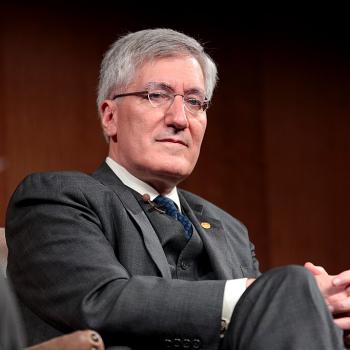While studying Michelangelo’s sculpture of Moses, part of the Tomb of Julius II, [Antonio] Forcellino began to notice certain “anomalies” that gave him pause. Further research, especially in the Vatican archives, led him to the relationship between Michelangelo and Cardinal Reginald Pole, Cardinal Ercole Gonzaga, and Vittoria Colonna, a noblewoman.
What these folks had in common was a desire to reform the Catholic Church from within. In fact, Pole’s views on justification, like Gaspar Contarini’s, bears a striking resemblance to Luther’s, although not identical to it.
Forcellino believes a tortured and conflicted Michaelangelo began to ask that question that seemed to be in the 16th-century air: “What must I do to be saved?” ”Grace cannot be purchased,” Michelangelo wrote to Colonna in light of the indulgences controversy, and, influenced by the Spirituali and their Christocentric discussions of reform and renewal, the work of il Maestro began to focus increasingly on Christ and a direct relationship with God, rather than on the insitutional church, its clergy, and its sacraments.
By 1547, Pole, then a papal governor in northern Italy, was at the center of a network of reformed-minded clergy, laity, and artists. They were educated, wealthy, and sympathetic to many of the same concerns as the Protestants, although they themselves were not Protestants.
Pole was seen as a man who could bridge the divide between Rome and the Reformers. Michelangelo, a member of this network, began to produce images “that mirror these ideas,” says one scholar in the Secrets documentary.
But the Spirituali began making the authorities nervous, and Cardinal Caraffa, a nobleman from Naples, became Pope Paul III’s top heresy hunter, Inquisitor General for Rome. He despised anything that smacked of Lutheranism, and to him the Spirituali were secret Lutherans.
And that included, believe it or not, Michelangelo. Caraffa denounced the master painter’s Second Coming of Christ, not only because of the rampant nudity, but also because it focused too much on man and his relation to Christ, not the church.
This group was soon persecuted out of existence. But not before the Pope named Cardinal Pole, an Englishman, as his hoped-for successor to the papacy! He was not elected, but think what might have been.










